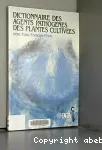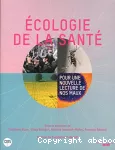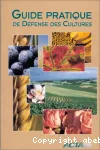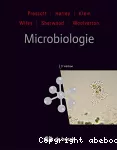Adresse
Infodoc : Réseau des bibliothèques et centres de documentation d'AgroParisTechFrance
contact

Catégories
Documents disponibles dans cette catégorie (60)
 Ajouter le résultat dans votre panier
Visionner les documents numériques
Faire une suggestion Affiner la recherche Interroger des sources externes
Ajouter le résultat dans votre panier
Visionner les documents numériques
Faire une suggestion Affiner la recherche Interroger des sources externes
 Tiré à partp. 583-618 : sch., bibliogr. ; 21 cm oblong.
Tiré à partp. 583-618 : sch., bibliogr. ; 21 cm oblong.
p. 583-618 : sch., bibliogr. ; 21 cm oblong.
 Thèse
Thèse
 Tiré à partp. 114-116, phot., bibliogr. ; 24 cm
Tiré à partp. 114-116, phot., bibliogr. ; 24 cm
p. 114-116, phot., bibliogr. ; 24 cm
 Mémoire
Mémoire
 Article
ArticleBananier : l'ennemi intérieur.
in La Recherche , n° 353, 01/05/2002
2002(353), p. 34-38, phot., bibliogr.
(353), p. 34-38, phot., bibliogr.
 Livre75.00 EUR
Livre75.00 EUR978-2-8041-5307-6XVII-1250 p.
XVII-1250 p.Prix : 75.00 EUR ISBN : 978-2-8041-5307-6 
 Livre
Livre
 Livre
Livre
 Article
ArticleConsideration of emerging pollutants in groundwater-based reuse concepts
in Water Science and Technology , Vol. 66 n° 6, 15/09/2012

 Mémoire1 vol.([103] p.)
Mémoire1 vol.([103] p.)
1 vol.([103] p.)
 Livre240 F.
Livre240 F.978-2-7380-0335-51 vol. (136 p.)
1 vol. (136 p.)Prix : 240 F. ISBN : 978-2-7380-0335-5 
 Livre
Livre978-3-490-09116-1486 p. : ill., bibliogr., index ; 24 cm
486 p. : ill., bibliogr., index ; 24 cmISBN : 978-3-490-09116-1 
 Article
ArticleDossier ozone
in Tecnologia del agua , n° 216, 21/11/2011

 Article
ArticleEcologie microbienne en milieu aquatique: des virus aux protozoaires
in Revue des sciences de l'eau (Paris) , Vol. 11 n° SP, 01/06/1998

 Livre
Livre978-2-8041-3508-9538 p.
538 p.ISBN : 978-2-8041-3508-9 
 Livre
Livre978-2-7491-5425-1191 p.
191 p.ISBN : 978-2-7491-5425-1 
 LivreXII-281 p. ; 25 cm
LivreXII-281 p. ; 25 cm
XII-281 p. ; 25 cm
 LivreXII-347 p. ; 25 cm
LivreXII-347 p. ; 25 cm
XII-347 p. ; 25 cm
 Thèse
Thèse
 Thèse
Thèse
 Thèse
Thèse
 Thèse
Thèse
 Livre
Livre
 Livre
Livre
 LivreXV-285p. : sch., phot., index ; 24cm
LivreXV-285p. : sch., phot., index ; 24cm
XV-285p. : sch., phot., index ; 24cm
 Livre
Livre
 Article
ArticleForest tree diseases of the Prairie provinces
in Information report / Northern Forest Research Centre , n° 286, 01/01/1987

 Livre350 F
Livre350 F978-2-85794-182-8XII-575 p.
XII-575 p.Prix : 350 F ISBN : 978-2-85794-182-8 
 Autre
Autre0273-1223433
433ISBN : 0273-1223 
 Autre
Autre
 Autre
Autre
 Livre
Livre
 Tiré à partp. 471-479 : tabl., graph., bibliogr. ; 27 cm
Tiré à partp. 471-479 : tabl., graph., bibliogr. ; 27 cm
p. 471-479 : tabl., graph., bibliogr. ; 27 cm


 Article
ArticleLa Lutte biologique contre les insectes ravageurs des forêts
in Bulletin technique , n° 26, 01/01/1994
1994(26), p. 1-7, schéma, bibliogr., résumé anglais.
(26), p. 1-7, schéma, bibliogr., résumé anglais.
 Livre42 p. : phot., bibliogr. ; 30 cm
Livre42 p. : phot., bibliogr. ; 30 cm
42 p. : phot., bibliogr. ; 30 cm
 Article
ArticleLes maladies hydriques liées à des contaminations microbiennes. Bibliographie
in Information eaux , n° 560, 01/02/2005

 Mémoire
Mémoire
 Livre
Livre978-2-225-81552-2447 p.
447 p.ISBN : 978-2-225-81552-2 
 Livre
Livre978-2-8041-6012-81196 p.
1196 p.ISBN : 978-2-8041-6012-8 
 Livre48.90 EUR
Livre48.90 EUR978-2-213-63743-31 vol. (495 p.)
1 vol. (495 p.)Prix : 48.90 EUR ISBN : 978-2-213-63743-3 
 Tiré à partvol.136 (2), p.255-264 : tabl., graph., bibliogr.
Tiré à partvol.136 (2), p.255-264 : tabl., graph., bibliogr.
vol.136 (2), p.255-264 : tabl., graph., bibliogr.
 Livre248 p. ; 24 cm
Livre248 p. ; 24 cm
248 p. ; 24 cm
 Livre61.70 EUR
Livre61.70 EUR978-2-88074-201-01 vol. (XVII-286 p.)
1 vol. (XVII-286 p.)Prix : 61.70 EUR ISBN : 978-2-88074-201-0 
 Livre
Livre978-0-471-12952-31 vol. (XVI-805 p.)
1 vol. (XVI-805 p.)ISBN : 978-0-471-12952-3 
 LivreParis [France] : Association de Coordination Technique Agricole (ACTA) ; 1992 (1991 cop.) 1992 (1991 cop.)351 p. ; 24 cm
LivreParis [France] : Association de Coordination Technique Agricole (ACTA) ; 1992 (1991 cop.) 1992 (1991 cop.)351 p. ; 24 cm
351 p. ; 24 cm
 Thèse
Thèse
 Article
ArticleLa Rage au Luxembourg.
in Bulletin de la Société des Naturalistes Luxembourgeois , n° 93, 01/01/1992
1992(93), p.5-40, tabl., graph., bibliogr.
(93), p.5-40, tabl., graph., bibliogr.
 Livre98 f. : bibliogr. ; 31 cm
Livre98 f. : bibliogr. ; 31 cm
98 f. : bibliogr. ; 31 cm
 Livre
Livre978-83-87647-20-9281 p. ; 22 cm
281 p. ; 22 cmISBN : 978-83-87647-20-9 
 Périodique
Périodique1115-8395
136 p.ISBN : 1115-8395 
 Livre
Livre978-2-87614-622-8222 p.
222 p.ISBN : 978-2-87614-622-8 
 Livre
Livre978-2-7066-0150-7270 p.
270 p.ISBN : 978-2-7066-0150-7 
 Livre
Livre978-2-904740-96-11 vol. (608p.) ; 29,5 cm
1 vol. (608p.) ; 29,5 cmISBN : 978-2-904740-96-1 
 Livre
Livre978-2-904740-95-41 vol. (608p.)
1 vol. (608p.)ISBN : 978-2-904740-95-4 
 Livre
Livre
 Tiré à part
Tiré à part
 Livre
Livre
 Livre
Livre978-2-7380-0648-6383 p.
383 p.ISBN : 978-2-7380-0648-6 
 Livre74 p.: sch.,phot.en coul.,bibliogr., 16 pl.en coul. ; 30 cm
Livre74 p.: sch.,phot.en coul.,bibliogr., 16 pl.en coul. ; 30 cm
74 p.: sch.,phot.en coul.,bibliogr., 16 pl.en coul. ; 30 cm






